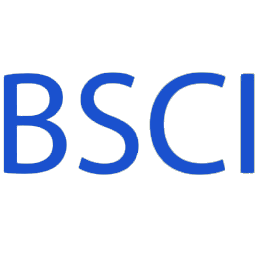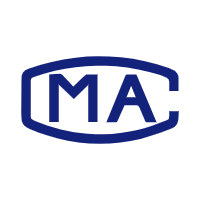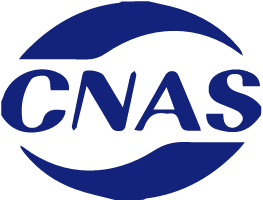
basic introduction
At present, the products that can be pasted with "Ecological Textile" certification are the products with the highest safety level among textiles. The concept of ecological textiles mainly comes from the "OEKO-TEX STANDARD 100" issued by the International Ecological Textile Research and Inspection Association in 1991. It emphasizes the treatment of waste after use; the treatment in the production process; the product is not harmful to users. At present, the most influential eco-textile certification in the world is the eco-textile certification "Oeko-Tex" of the International Eco-textile Research and Inspection Association and the eco-label of the European Union. my country also promulgated the national standard GB/T 18885-2002 "Technical Requirements for Ecological Textiles" on November 22, 2002. We believe that textiles that meet these requirements can bring you peace of mind and comfort.
Test items
pH value
Formaldehyde content
Extractable heavy metals
Hexavalent
Insecticide
Phenols
Azo/sensitizing/carcinogenic dyes
Chlorobenzene and chlorotoluene
Phthalates
Organotin
Color fastness
Volatile Organic Compounds
odor
asbestos
pH value
The pH of human skin is between 4.5 and 6.0. Slightly acidic can protect the skin against bacteria and viruses. As people get older, their skin will become more and more neutral and cannot be as antibacterial as before. Textiles that are neutral or slightly acidic are beneficial to the human body. If the pH of the textile is too high or too low, the skin surface is easily damaged.
Main testing items
formaldehyde
Formaldehyde gives textiles shrink-proof, wrinkle-resistant, and iron-free functions. This volatile substance is easily released from the fabric, thereby damaging the health of the human body, especially irritating the respiratory mucosa.
Extractable heavy metals
Antimony (Sb) | Arsenic (As) | Lead (Pb) | Cadmium (Cd) | Total Chromium (Cr) |
Cobalt (Co) | Copper (Cu) | Nickel (Ni) | Mercury (Hg) | Hexavalent Chromium (Cr VI) |
Plants will absorb heavy metals in the soil during planting, and heavy metals are present in the post-processing of textiles and various dyes. Heavy metals enter the body and accumulate in organs. Once this accumulation reaches a certain level, it will have a serious impact on our health. We simulate human sweat and extract these heavy metals to detect the content of heavy metals in textiles.
Azo/sensitizing/carcinogenic dyes
The dyes in clothing fabrics are in contact with the skin for a long time, and their safety is undoubtedly very important. Azo dyes are a common type of dyes widely used in the textile and leather industries. However, some of the dyes are believed to be reduced to aromatic amines that are harmful to human health. Some dyes that are highly dispersed in water have very small molecules and may be absorbed after prolonged contact with the skin. Some of these dyes are believed to have sensitizing and carcinogenic effects.
Phthalates
Phthalates are a commonly used plasticizer and will be added to plastics and coatings to enhance their performance. Recent studies have shown that some o-benzenes can have adverse effects on children's development, so there are strict restrictions on toys that are imported into babies.
Organotin
Organic tin has antibacterial, anti-mildew and other biocide effects, and is used in shoe linings, gloves, child care products and other products. High concentrations of organotin are neurotoxic after being absorbed by the body through the skin.
Color fastness
Color fastness is the basic requirement of consumers for product performance and directly reflects product quality. Dye shedding not only affects the appearance of the garment, the dye is more likely to be absorbed by the body through the skin. Four color fastness indicators are selected in the eco-textile standard. These four color fastnesses are water stains, sweat stains (acid/alkaline), rubbing resistance (dry/wet) and saliva (especially for infants and young children). The color fastness of saliva and perspiration on baby clothes is particularly important because infants and young children can absorb dye through saliva and perspiration.
Our advantage
1. With a professional qualification and experienced expert technical team, we can provide you with professional consultation and services.
2. Have advanced laboratory equipment to ensure the accuracy and reliability of test data.
3. As a third-party testing and certification organization trusted by customers worldwide, we are your certificate of quality.


BSCI certification is an abbreviation of BusinessSocialComplianceInitiative, and Chinese is called business social standard certification. BSCI is an organization that advocates the business community to abide by social responsibility. At the same time, it is a non-profit organization.

CMA, the name is \"China Metrology Accreditation\", the abbreviation of \"China Metrology Accreditation\" in English. According to the provisions of Article 22 of the Metrology Law of the People’s Republic of China: “The product quality inspection agency that provides notarized data to the society must be evaluated by the metrological administrative department of the people’s government at or above the provincial level for the capability and reliability of metrological verification and testing. Qualified.\"

Laboratory accreditation is a third-party certification that CNAS has the ability to perform specific testing and calibration work for testing and calibration laboratories.
At present, the products that can be pasted with \"Ecological Textile\" certification are the products with the highest safety level among textiles. The concept of ecological textiles mainly comes from the \"OEKO-TEX STANDARD 100\" issued by the International Ecological Textile Research and Inspection Association in 1991. It emphasizes the treatment of waste after use; the treatment in the production process; the product is not harmful to users. At present, the most influential eco-textile certification in the world is the eco-textile certification \"Oeko-Tex\" of the International Eco-textile Research and Inspection Association and the eco-label of the European Union.
Get a quote